

Max Davies
2025 Lexus NX450h+ F Sport review
1 Month Ago
It's the most anticipated EV launch of the year for Australia. Does the Tesla Model Y live up to the hype?
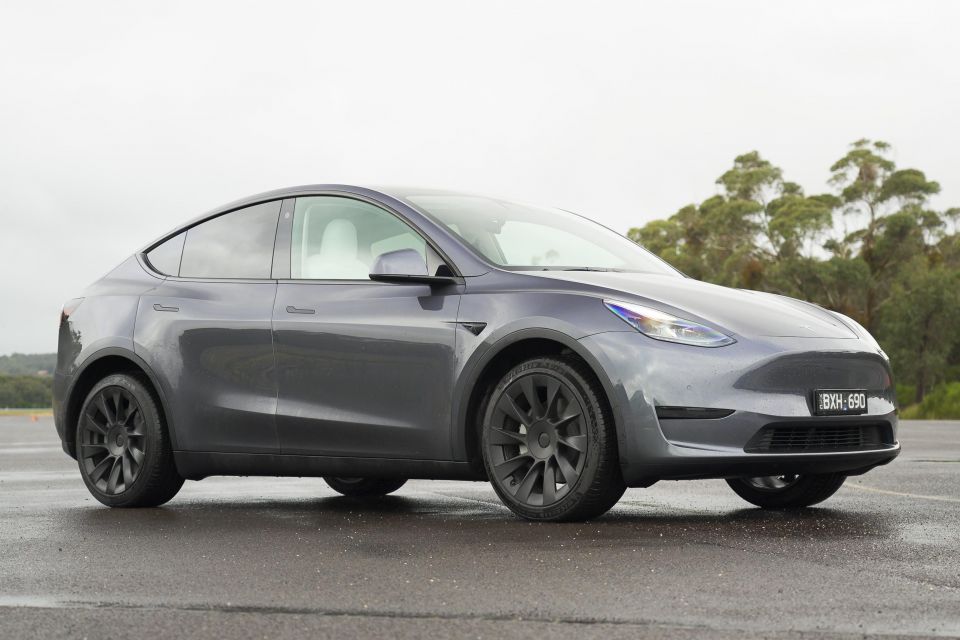


Quickly see how this car stacks up against its competition. Select any benchmark to see more details.
Where expert car reviews meet expert car buying – CarExpert gives you trusted advice, personalised service and real savings on your next new car.
The launch of the Tesla Model Y has been a long time coming in Australia. Tesla imported three vehicles to the country in November last year for homologation before they were expected to go on sale.
The on-sale date was then delayed indefinitely until the brand finally hit the switch last week.
Since then, wait times have blown out to around a year for new orders with thousands of people entering the queue for their delivery, including yours truly.
This car has been out for a while now in other markets, including Europe, where the reception about how it drives hasn’t been so positive. We were keen to see how it would handle Australian roads and some of the unique conditions we throw at cars.
The price of the Tesla Model Y went up by over $3000 midway through our few days with the car.
The Model Y range now opens at $72,300 before on-road costs, up $3400 from the $68,900 price tag announced just a week ago.
The Model Y Performance meanwhile, is now priced at $102,329 before on-roads, including the Luxury Car Tax. That’s an increase of $3640.
There are only a few options to choose from. There are five colours available and all but white is a premium option priced at $1500 or $2900.
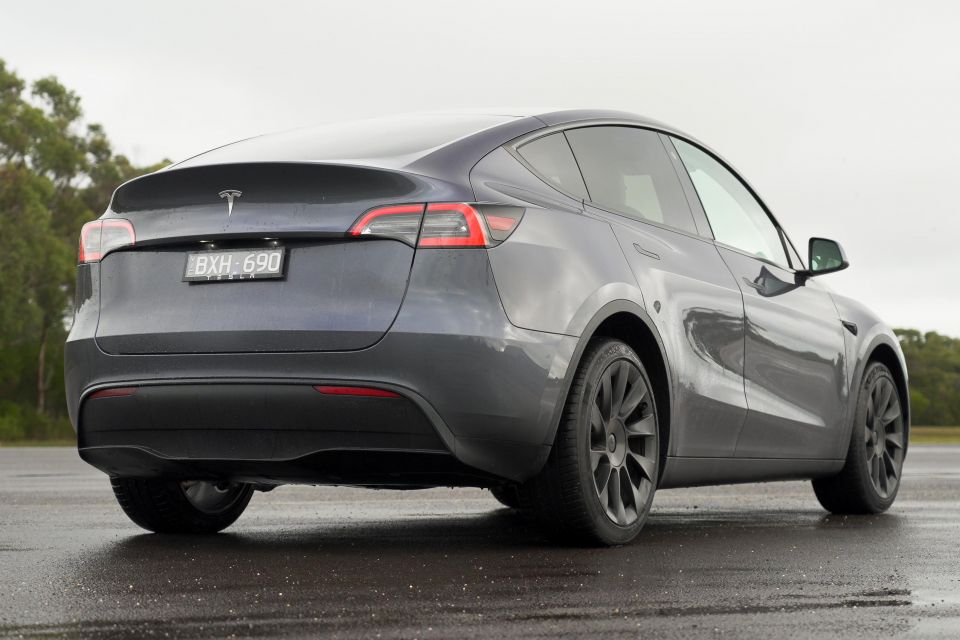
An optional larger set of wheels is available for the entry-level variant, stepping the wheel size up from 19- to 20 inches and bringing Michelin Pilot Sport EV tyres. This upgrade costs $2900.
You can also opt for a white interior, which will set you back an additional $1500.
We tested the entry-level Model Y with optional white interior and 20-inch alloy wheels.
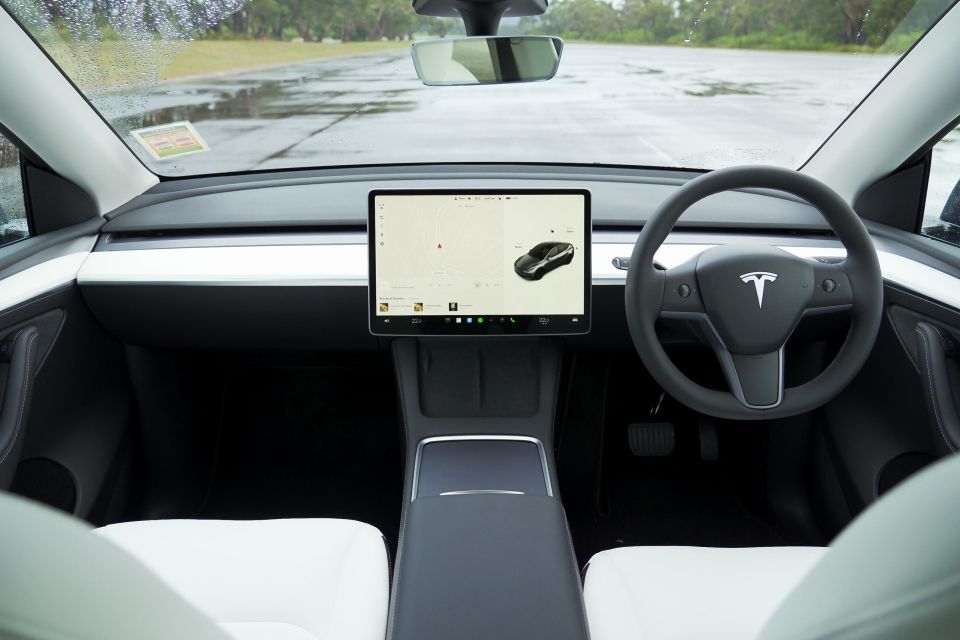
Buy your new car without the stress. It's fast, simple and completely free.

Great service from Travis and team, second time I have used this business would not hesitate to recommend them to anyone
Craig C.
Purchased a Ford Ranger in Sunshine Coast, QLD
CarExpert helped Craig save $7,224 on his Ford Ranger, now let us save you on your next new car.
Get your BEST priceIf you’ve seen the interior of a Tesla Model 3, you can picture what the Model Y will look like. It’s sparse, minimalist, and aims to just get the job done.
My wife and I owned a Tesla Model 3 Performance and recently sold it to swap into a Model Y. I find comparing the two gives you the best indication of where and how the Model Y differs.
The first thing you’ll notice is the higher hip entry point. I found (don’t judge me) it hard to climb into and out of the Model 3. The Performance sits slightly lower, and I found it was a constant chore to clamber in and out.
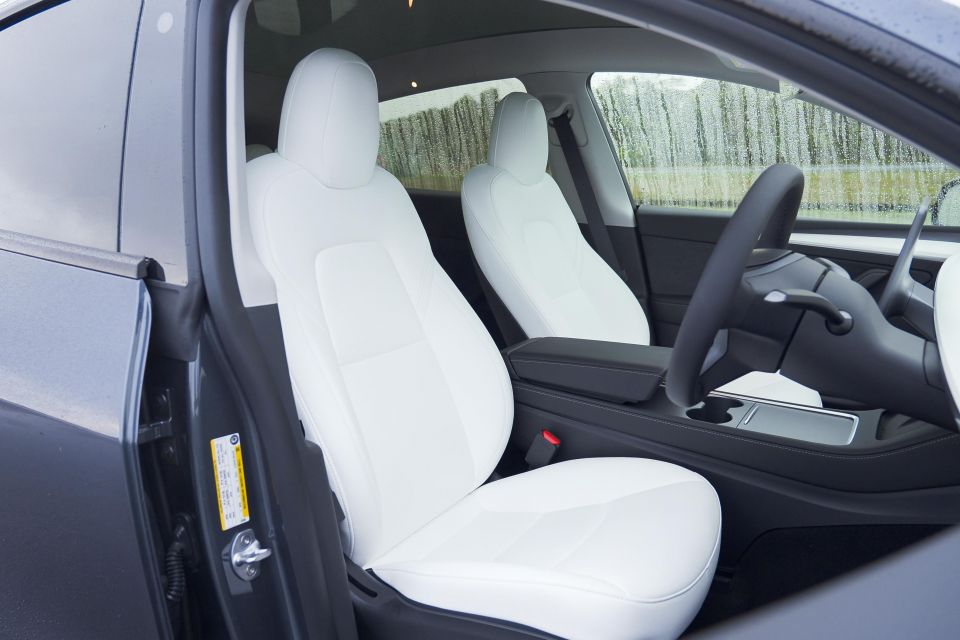
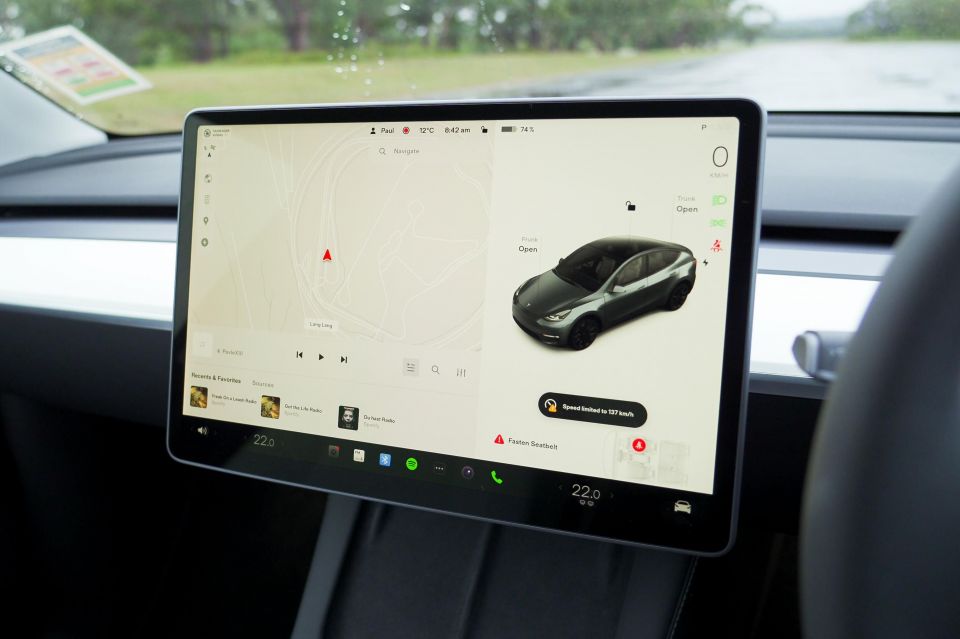
Loading a baby in also became difficult after a while because of the low entry point and low roofline.
The Model Y improves all of this greatly with an hip entry point that’s around 100mm higher. You literally just slide in now instead of having to arch your way in and then sit down.
The doors are also bigger and the roof line is, higher so there’s nothing to whack on the way in and out.
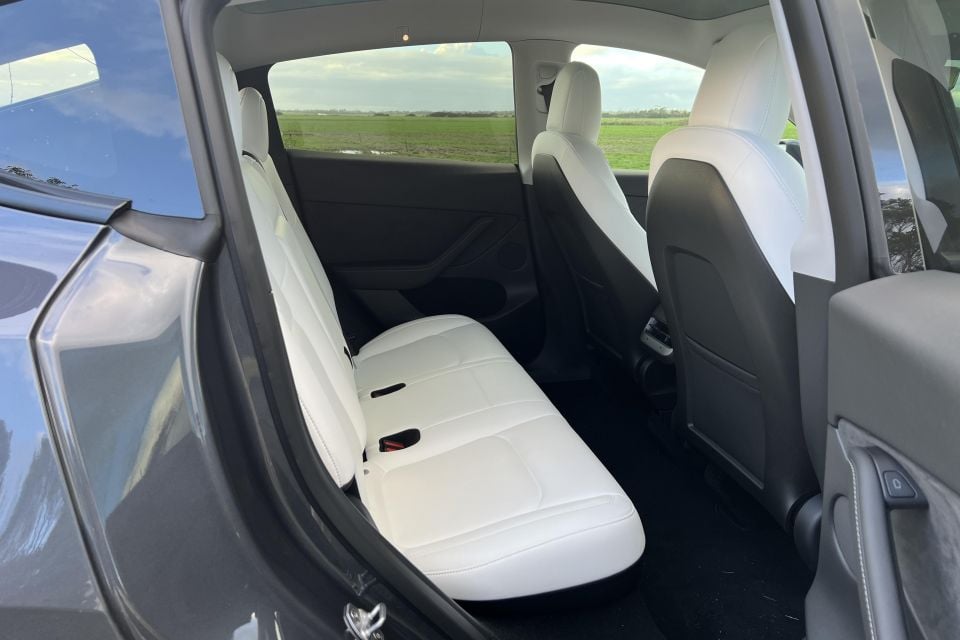
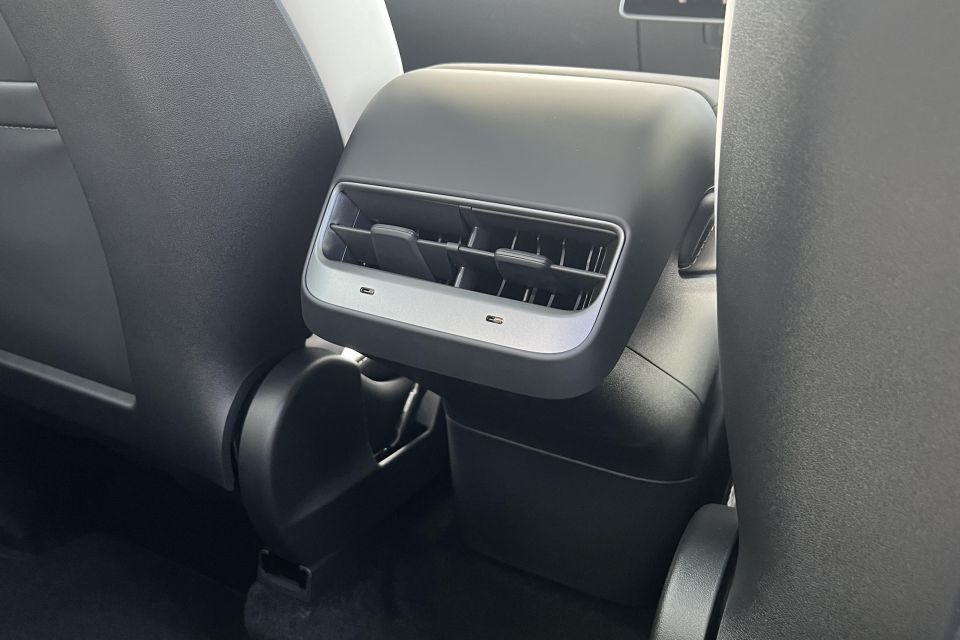
In the second row this also translates to a higher seating position (you sometimes felt like your knees were super high in the second row of a Model 3) and more space under the front seats, due to them sitting on a higher mounting point.
The second row offers plenty of knee-, shoulder-, and headroom. The 40/20/40 split-folding seats also offer an inbuilt armrest with cupholders and an additional fold-down section for easy access to the boot.
Speaking of the boot, you’ll find 854 litres of cargo space behind the second row. There’s also 117 litres available in the front boot and a total of 2041 litres available with the second row folded (inclusive of deep storage beneath the cargo floor).
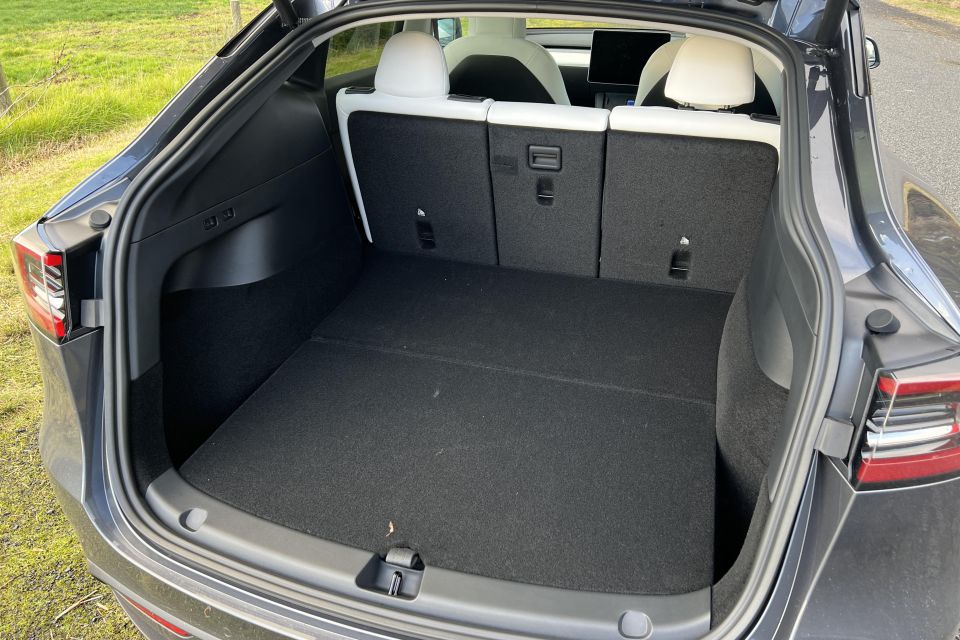
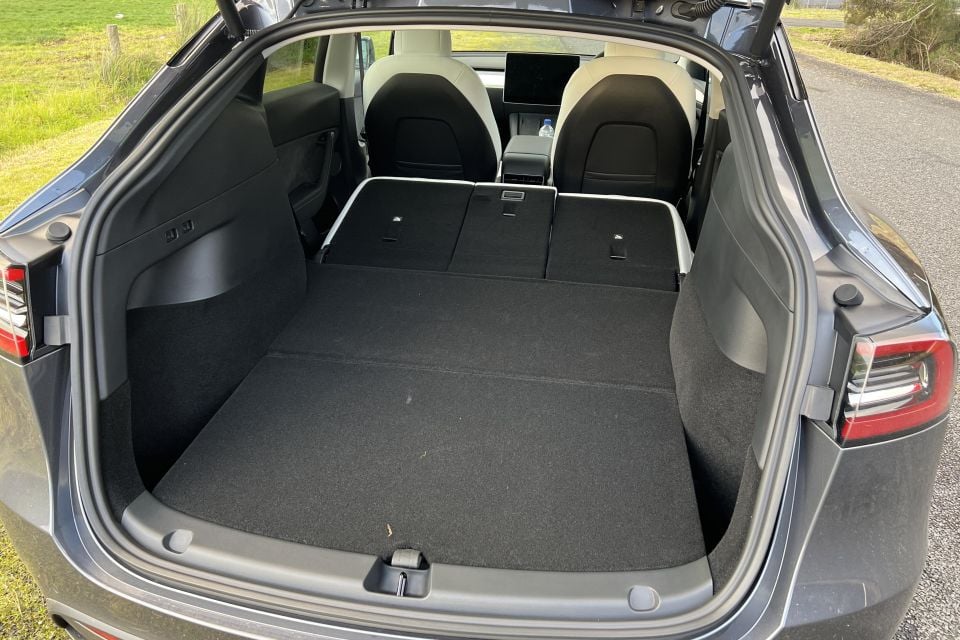
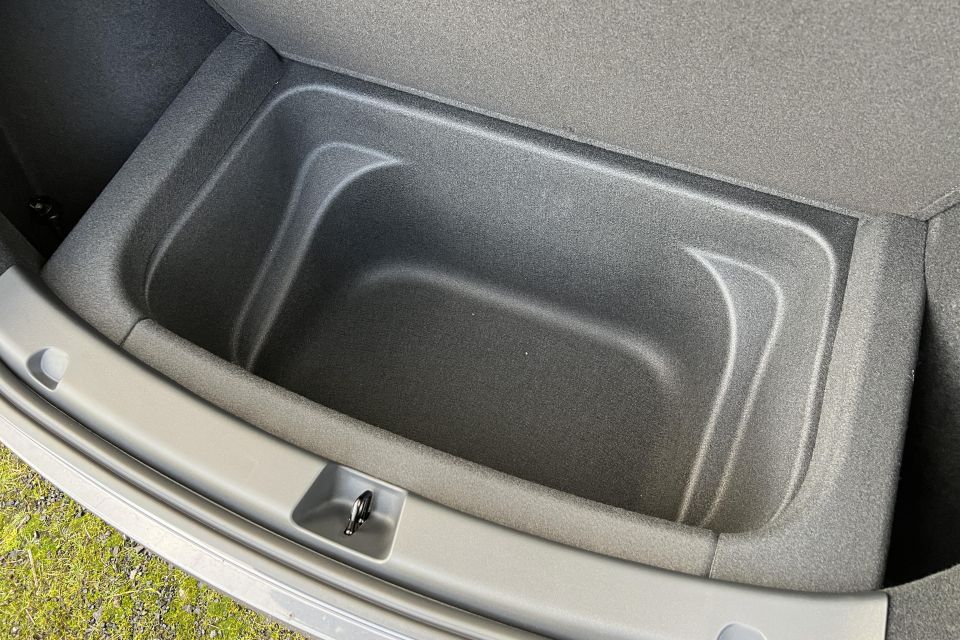
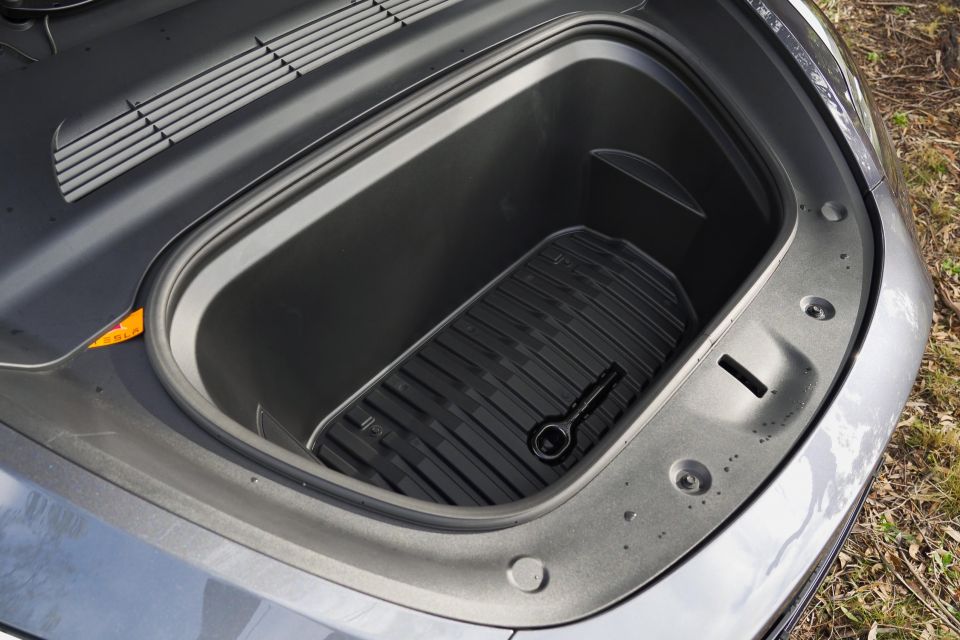
The boot misses out on a cargo cover and a 12V outlet, but comes with a powered tailgate.
Storage is the main theme in the Model Y. In the front there’s ample storage within the doors, two wireless phone chargers sitting beneath the main 15-inch infotainment screen, storage in a closable box beneath the wireless chargers, and finally a centre console.
The glovebox houses a single USB-A port for the vehicle’s dash camera and sentry recorder, while two USB-C ports in the centre console are joined by a further two in the second row.

The 15-inch infotainment screen is the centrepiece to the interior and controls literally all of the vehicle’s functions. Everything from climate to mapping. The rest are driven by two buttons and scroll wheels on the steering wheel that can take on a variety of functions depending on which section of the infotainment screen is being used.
We’ll cover this more in the driving section, but the latest firmware update to the infotainment screen has made all of the buttons painfully small. Tesla decided to increase the size of the driving visualisation (the section on the screen that displays lane markings, other vehicles, stop and speed limit signs), which reduced the size of maps, the speedometer, and the menu buttons.
While trying to concentrate on the road that change made it difficult to see the speedometer and do basic things like change the temperature. It’s needlessly fiddly and there needs to at least be an option to supersize some of these buttons, and to reduce the size of the novel driving visualisations.
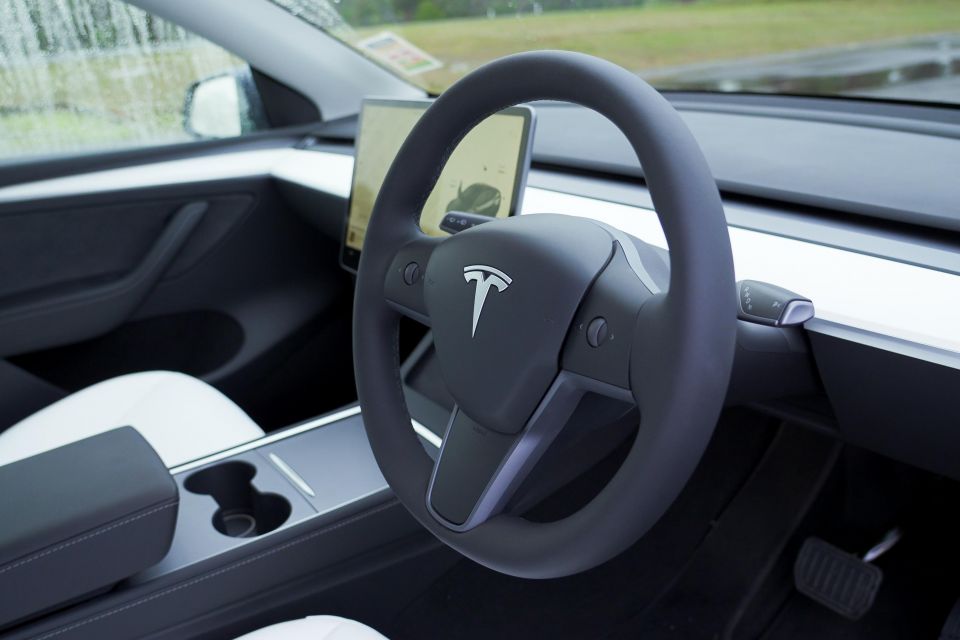
A head-up display or a driver display really needs to be integrated to fix some of the functionality issues centred around trying to make everything work on the infotainment display.
Outside of that, the central display does an excellent job of mapping, and is also a source of hours of entertainment with inbuilt music and video streaming services. There’s a voice recognition function, but it needs a lot of work – it’s often inaccurate and doesn’t really understand names or basic functions.
It’s a shame there’s no ability to pass commands to your phone or to use Apple CarPlay or Android Auto, like most other manufacturers.
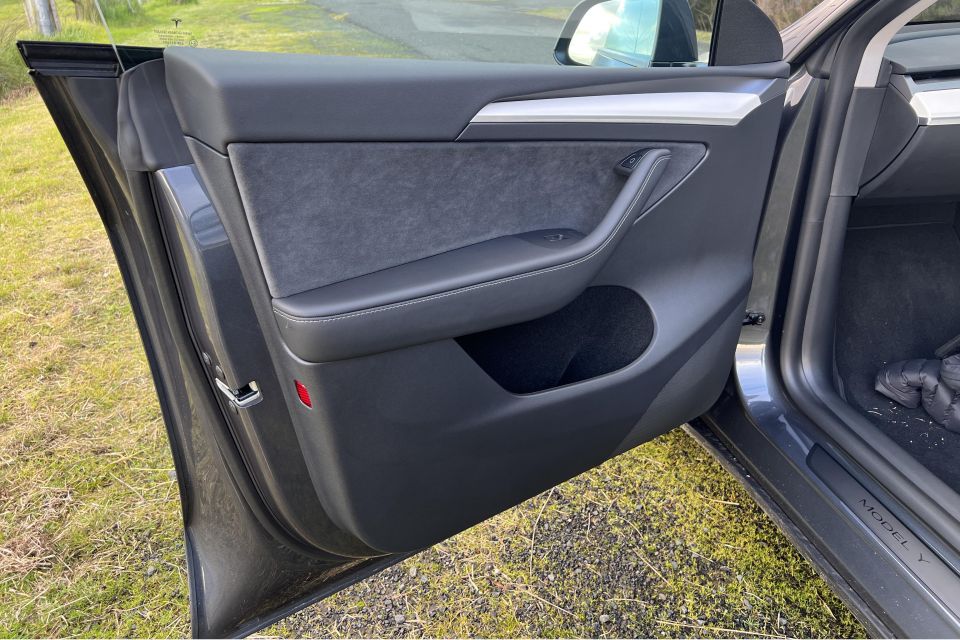

While the premium functions are free for the first 30 days, they require a $10/month subscription thereafter. This covers audio and video streaming, along with traffic and satellite map overlays.
The sound system is absolutely next level. I revealed a while back from a source within Tesla the brand had hired former Bang and Olufsen engineers to develop a bespoke sound system. They came up with an unbranded 13-speaker system that includes a subwoofer and two amplifiers.
The benefit of sourcing their own speakers and not showing a brand is there are no expensive licensing fees to pay and you don’t need to work within the narrow specifications of the particular audio brand.
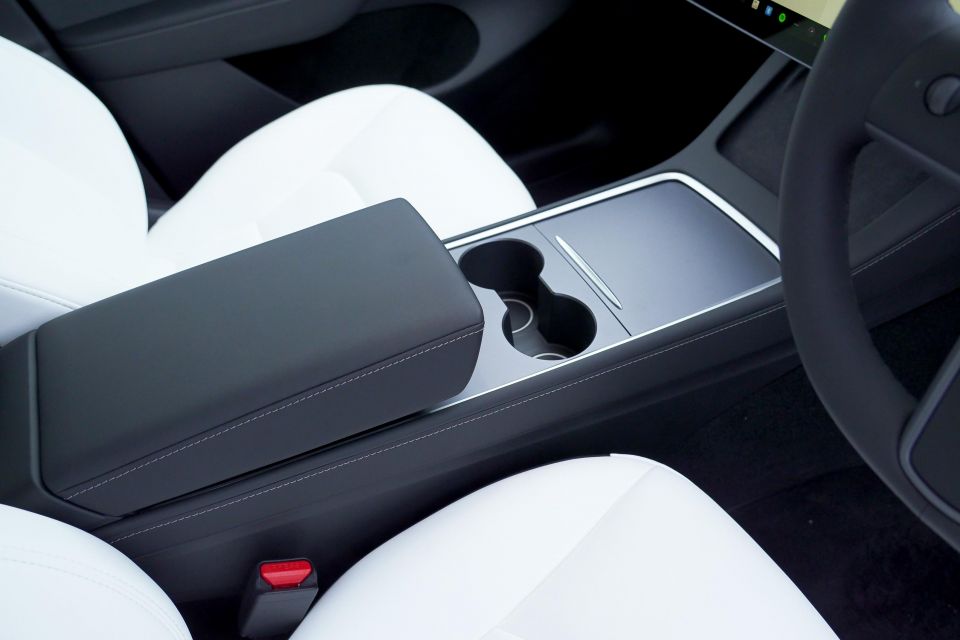
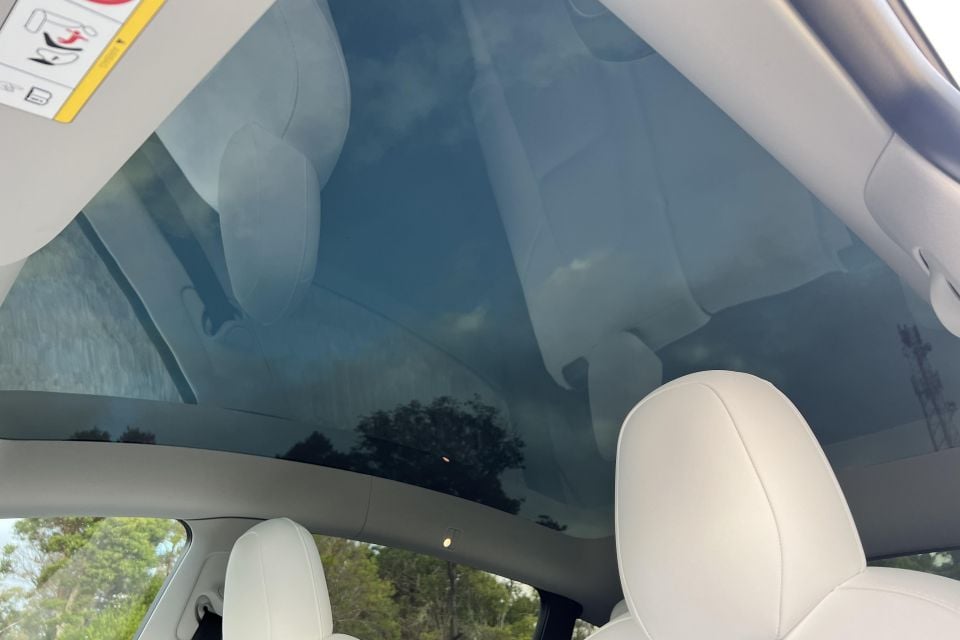
In my opinion it’s the best sound system on the market – and we’ve tested some ultra-luxury brands with expensive high-end sound systems in the past.
In addition to audio streaming, the infotainment system can play FM and DAB digital radio. Any AM or digital stations outside of DAB range can be streamed via the internet, so there’s always music coverage.
Each variant comes standard with a full-length glass roof, with glass covers available as an accessory from Tesla.
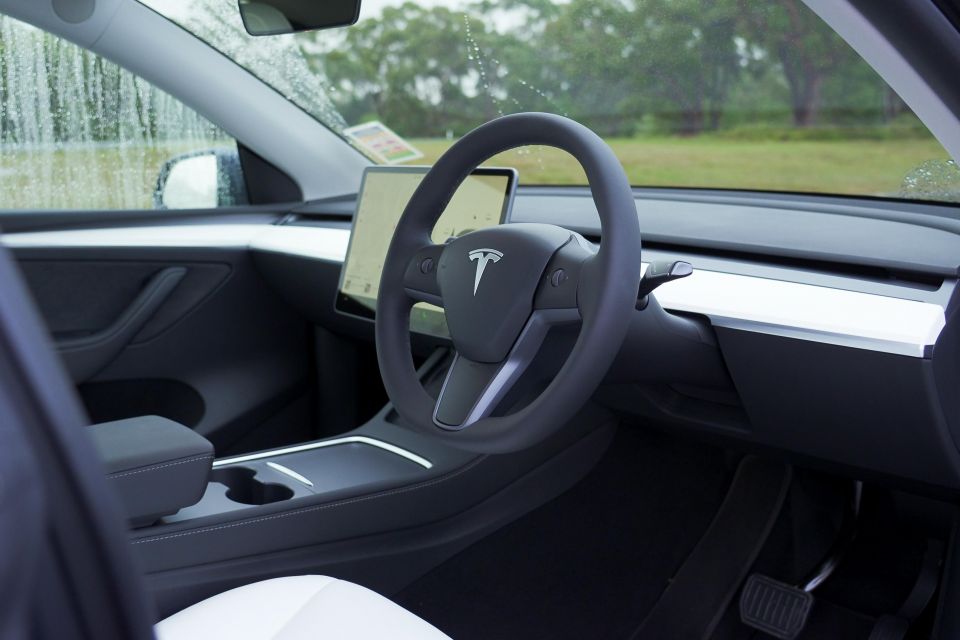
It’s worth briefly touching on the dash camera and Sentry mode. Using the USB-A port in the glovebox, the car can record constantly while driving from the front, side, and rear cameras. It can then be programmed to automatically save the last 10 minutes of footage in the event of a collision or when prompted by the driver.
Sentry mode on the other hand continuously monitors for movement outside the vehicle and records the last 10 minutes of footage in the event movement triggers it or the alarm is activated.
The glovebox can’t be opened by anybody who breaks into the car (it’s opened using the screen) to steal the USB device the data records to.
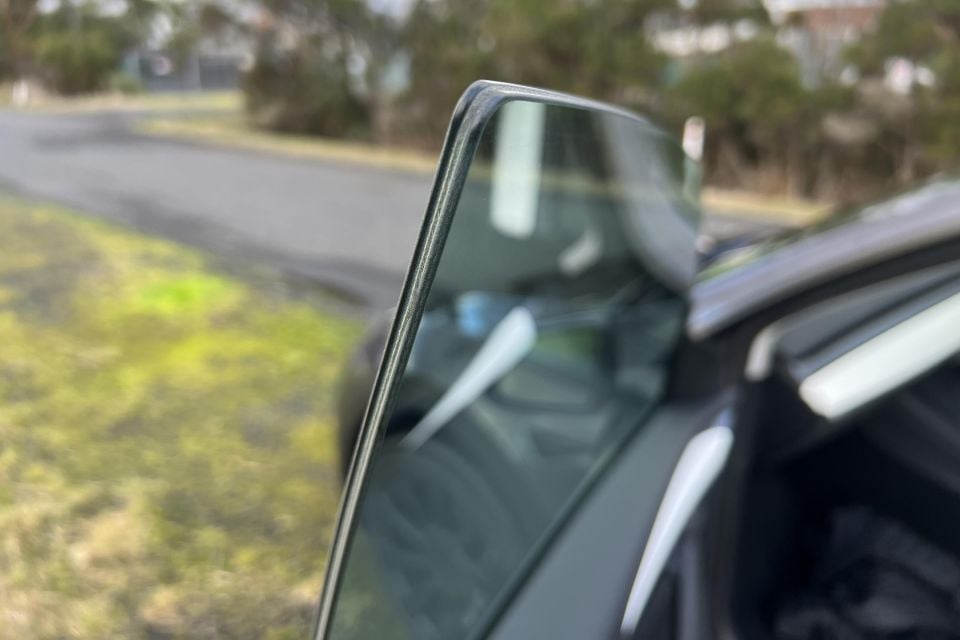
One point of concern I had with the doors was the use of electronic door strikes. Many brands use these now to provide an easier locking/unlocking mechanism and also to prevent the doors opening when there is oncoming traffic. In all other vehicles there’s a manual mechanical level that can be pulled in the event power is lost to the doors.
While the front two doors have a manual release, the back doors don’t. Well… they do, but it’s hidden behind a piece of carpet in the door bins that requires a screwdriver to pry open. It’s not in a logical location and it means rear occupants would need to climb through to the front to exit in an emergency if it were to lose power entirely.
Doors aside, one of the vehicle’s biggest highlights is the Tesla application.
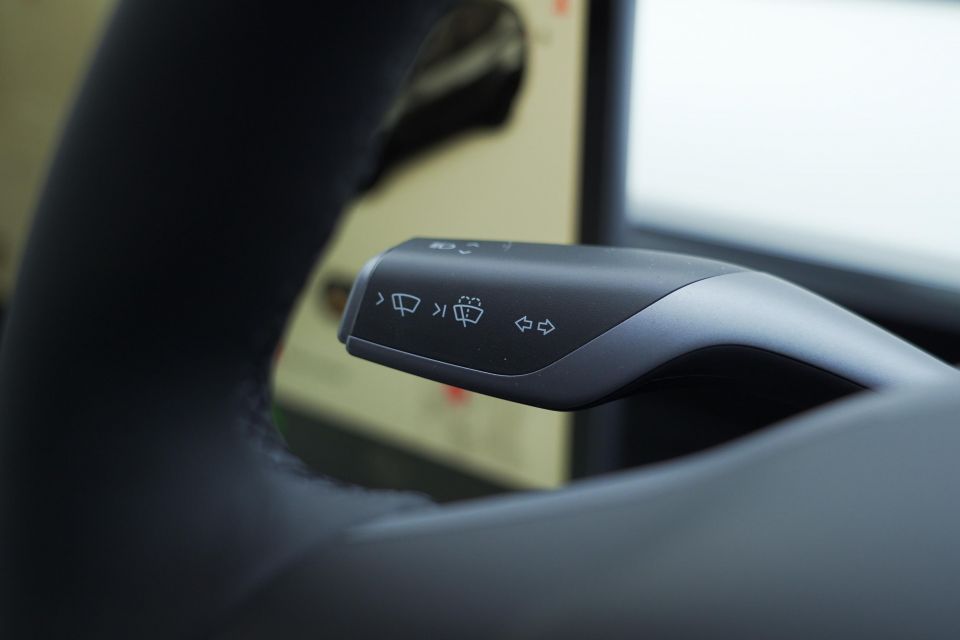
It allows you to remotely access the vehicle from anywhere and provides functions like preheating/cooling, window venting, submissions of navigation destinations, charging, security monitoring activation/deactivation and a host of other features.
It’s well and truly the best vehicle app on the market. One of its best features is the ability to ditch the two credit card-sized keys the vehicle comes with. You can program your phone to act as a key so when you approach it automatically unlocks and recalls your settings.
The application also allows you to authenticate other drivers to drive the vehicle. So if you’d like your friend to drive the car home, you can authenticate them as a driver so they can operate the vehicle – even with speed restrictions if required.

Where expert car reviews meet expert car buying – CarExpert gives you trusted advice, personalised service and real savings on your next new car.
Unfortunately it’s been tricky to get accurate data on the drivetrains available for the Model Y in Australia. The entry-level Model Y configuration is only sold in one other market globally (Hong Kong) so it’s a bit of guesswork.
Our best estimation is the rear-wheel drive Model Y base model produces 220kW of power and 420Nm of torque. It tips the scales at 1909kg and uses (to our best estimation) a 62.3kWh lithium-iron phosphate (LFP) battery. It’s capable of sprinting from 0-100km/h in 6.9 seconds.
By virtue of testing on two 250kW chargers, we determined that the maximum DC charge rate is 170kW, which it hits very briefly before tapering down to an average of just under 100kW. AC charging is capped at 11kW on a three-phase charger.

Stepping up to the Model Y Performance nets an additional electric motor, for all-wheel drive. It produces a combined 413kW of power and 660Nm of torque. It uses a larger 75kWh battery and moves from 0-100km/h in 3.7 seconds. It tips the scales at 2072kg.
It can charge much faster with a peak charge rate of 250kW of power that averages down to 110kW of power over a full charge cycle. It too can charge at up to 11kW on an AC three-phase charger.
Driving range is listed as 455km and 514km respectively for the Model Y and Model Y Performance on the WLTP cycle.
After around 700km of testing we returned an average of 17.4kWh/100km. This included a mix of city, highway and high performance driving at the proving ground. Our highway cycle came in at 16.2kWh/100km.
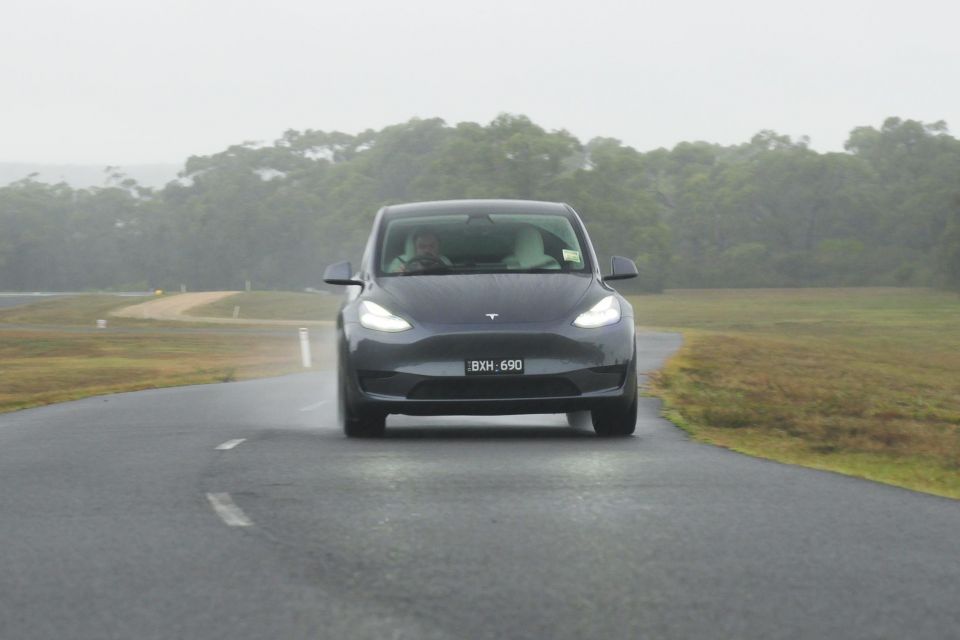
Driving a Tesla is very easy and straightforward. There are no redundant start buttons or anything too crazy you need to do. Once you’re inside, you push the brake pedal, use the column-mounted shifter to move into Drive, and away you go.
There are two main drive modes: Chill and Standard. As I’m sure you can deduce, one is for mild acceleration, while the other is for quicker acceleration.
In the Performance versions of the Model 3 there’s a noticeable difference between the two, but in the base model it’s not really that noticeable. The steering can then be changed between three modes: Comfort, Normal and Sport.
Comfort is more than enough steering weight for regular driving; Normal and Sport both just add unnecessary weight to the driving experience.
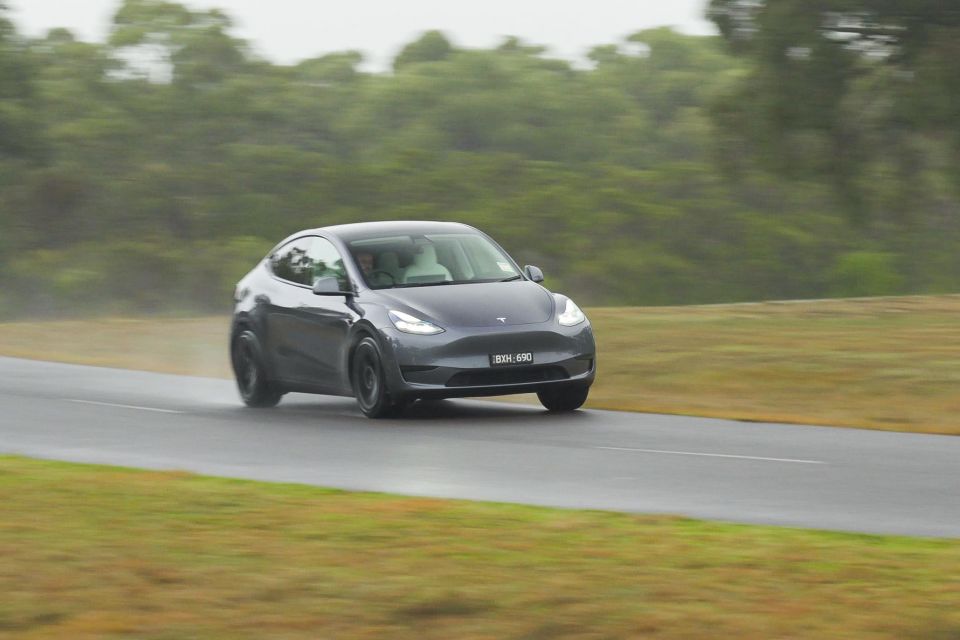
Before even getting three blocks away from Tesla after collecting the car, I began to notice how unnecessarily firm the ride is. It’s firmer than any other SUV in this segment. When I talk about ride firmness, it’s on a scale of soft like a Mercedes-Benz S-Class through to very firm like a BMW M car.
The Model Y riding on the optional 20-inch alloy wheels and Michelin Pilot Sport EV tyres feels about as close as you’d want to get to a BMW X3 M without having to ship the car from the same production line.
It crashes over potholes and minor road imperfections to the point where you fear the result of catching the next cat’s eye on the road.
Like most of the cars we drive on video, we tested the Model Y at our proving ground test location. This gave us a chance to test the vehicle across a variety of speeds and across a road loop designed to simulate a good breadth of Australian road conditions, including tram tracks, low friction surfaces, and a set of sine waves we attack at the maximum legal highway speed in Australia (130km/h).
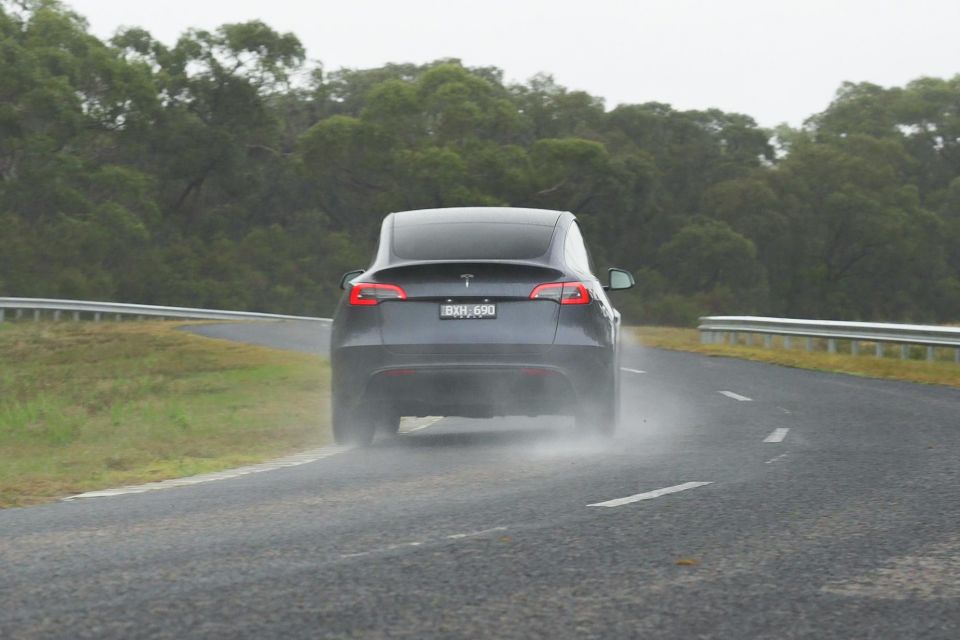
This road loop unearthed what we experienced around the city, which was a very firm ride devoid of relief from constant fidgeting and busyness. Most brands that want this kind of firmness in the sport setting will opt for air suspension or an adaptive damper that provides a degree of ride quality variations.
The Model Y is desperately in need of adaptive damping to limit the exhausting battle to find smooth sections of road. As an entry-level family SUV the ride doesn’t need to be this firm, there’s just no logic to it. It makes me wonder what we will feel when Tesla drops the Model Y Performance in Australia, which rides on even bigger 21-inch alloy wheels.
We didn’t get the chance to drive a Model Y on the 19-inch wheels (the variant I’ve ordered), but I’m hoping it’s significantly better than on the 20-inch wheels.
Putting that negative to one side, one of the benefits of the firm ride and the new Michelin Pilot Sport EV tyre is the incredible amount of traction and high-quality handling on offer.
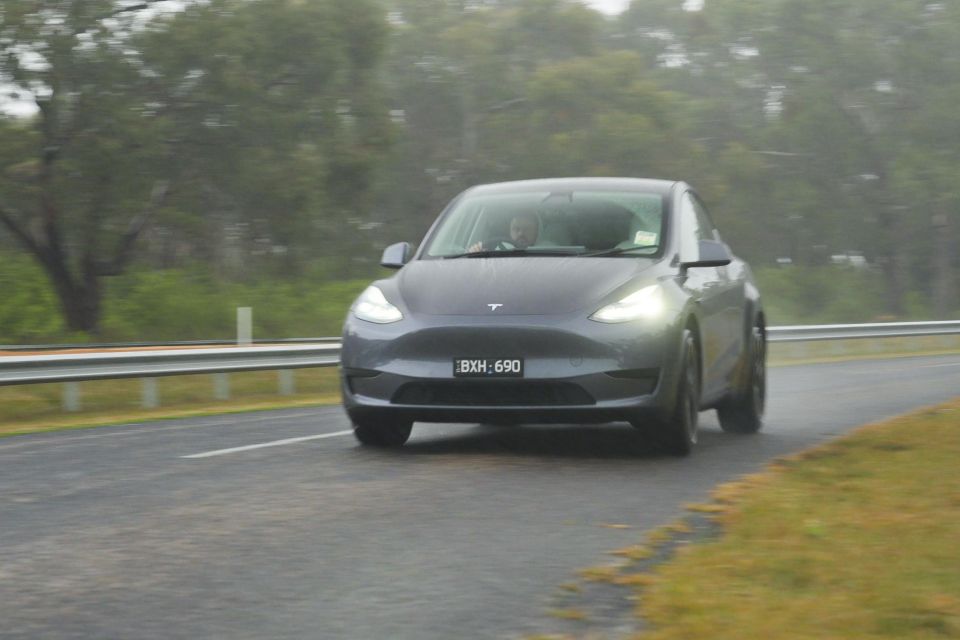
On our filming day it was absolutely sopping wet, and by chance we had an Audi Q5 Sportback 45 TFSI quattro on test. On the same circuit at our proving ground, despite only being rear-wheel drive, the Model Y had next-level amounts of traction.
Even when pushed to its limits, it progressively oversteered with an accurate and unobtrusive stability control tune gently pulling it back into line. The Audi on the other hand showed greater signs of understeer in the wet and wasn’t nearly as composed as speeds increased.
While the ride is painfully firm in day-to-day situations, it pays dividends when the pace picks up and you want to have some fun.
The steering is accurate and at two turns lock-to-lock there’s plenty of response from the wheel about centre. It’s fun to throw around and it doesn’t feel as big on the road as its mass would suggest.
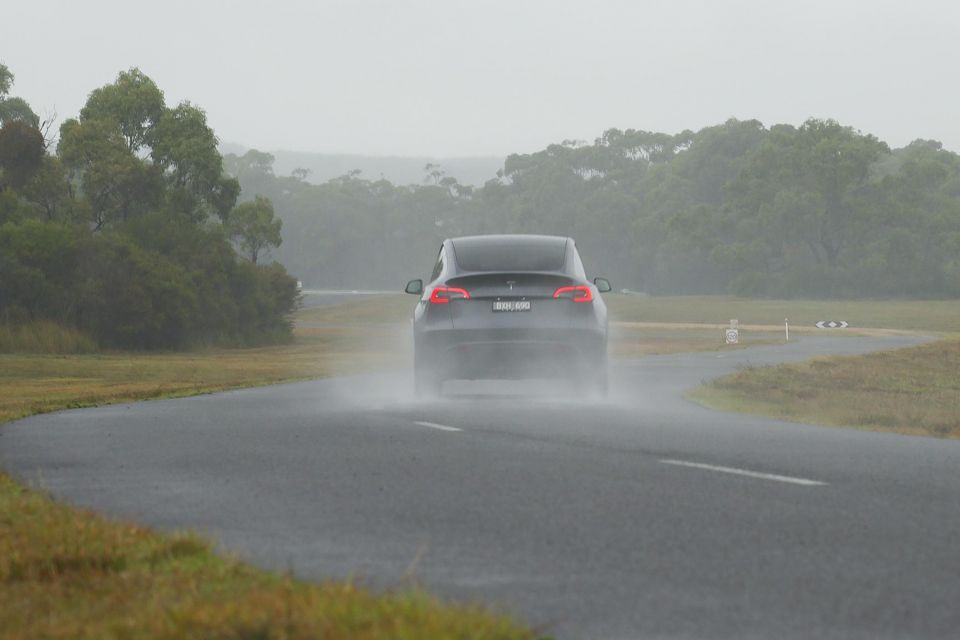
Acceleration is brisk, but nothing spectacular. It feels about right for an SUV this size. I love the regen and single-pedal driving. Having owned a Model 3 previously it’s easy to get used to and you’ll find you rarely need the actual brake pedal when driving.
It’s very clever and a system that other brands are yet to master – despite trying to mimic the Tesla setup.
Tesla has ditched any form of radar on its vehicles. It results in the use of cameras only for things like cruise control and lane-keeping (which Tesla calls Autopilot).
Disappointingly this also means the Y doesn’t have basic safety technology like rear cross-traffic alert (a radar-driven safety feature used to alert the driver to vehicles, pedestrians, or cyclists approaching the rear when reversing out of parks), which is standard on many new cars today.

The lane-centring function works well and is the best in the business for accuracy. We had a number of ‘phantom braking’ events in our Model 3, where the vehicle would brake at shadows assuming they were solid objects, but didn’t encounter any of that in the Model Y during testing.
Visibility from the driver’s seat is excellent with clear vision out of the front and sides. Visibility out the rear is poor due to a narrow envelope out the window. The lack of blind-spot monitoring on the wing mirrors is also disappointing. Instead drivers need to rely on small markings that appear on the infotainment system when merging.
There’s also now a blind-spot camera display that appears on the lower right portion of the infotainment display when the indicator goes on, but it’s virtually unusable due to its location. Your left hand is always in the way of the screen and being in the bottom right of the screen you need to take your eyes off the road, move your left hand, and glance at the screen to get a visual on the blind spot.
Kia and Hyundai both integrate blind spot functions into the head-up display and within the driver display where the camera appears directly in front of the driver. This implementation is significantly better than the small, obscured display Tesla uses.
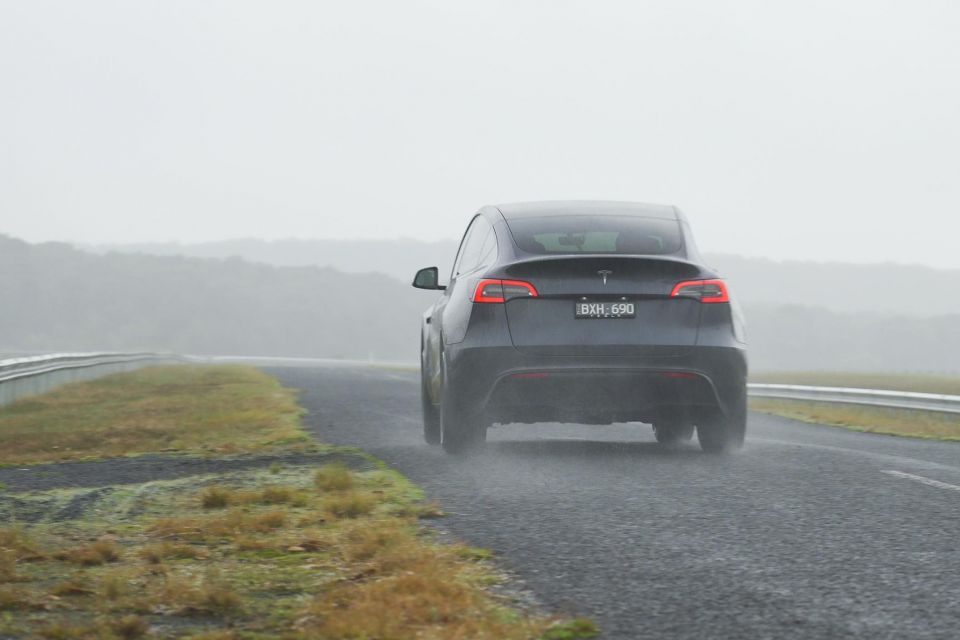
I’m not as concerned about these functions. Tesla has the ability to roll out over-the-air updates and tends to fix usability issues like these pretty quickly once they’re raised.
The headlights appear to be matrix LED capable but currently only offer a high beam auto on/off function. I ended up switching this off because it kept staying on high beam while other vehicles were approaching and not switching back to the main beam quick enough.
We assume at some point Tesla will roll out a software update that enables matrix LED functionality.
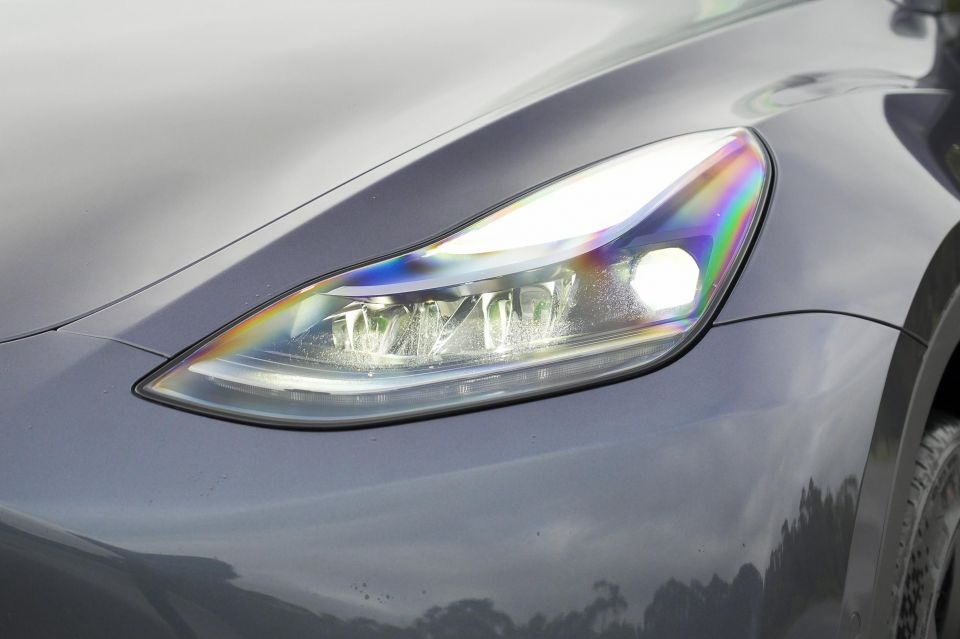
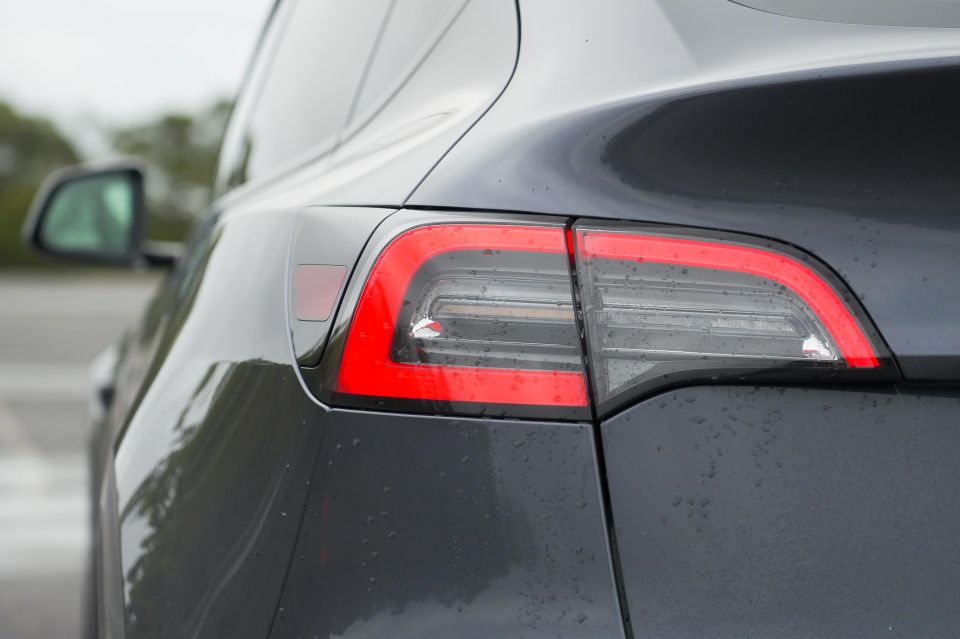

The base Model Y features:
The Performance adds:

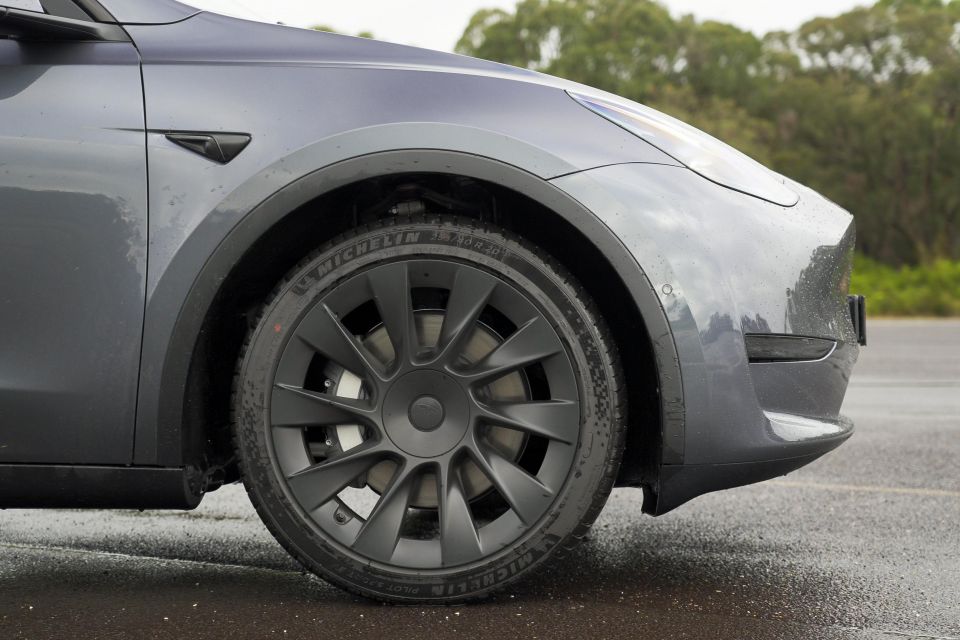
Options on both models include:
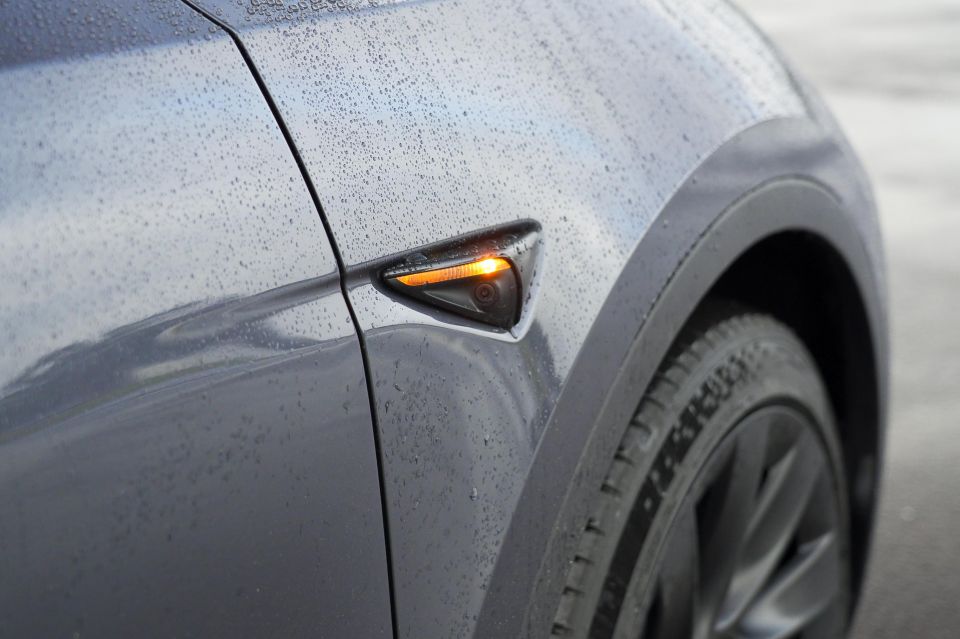
The Tesla Model Y has yet to be assessed by ANCAP or Euro NCAP.
While Tesla hasn’t released a full list of safety equipment for the Model Y, the Model 3 comes standard with the following equipment:
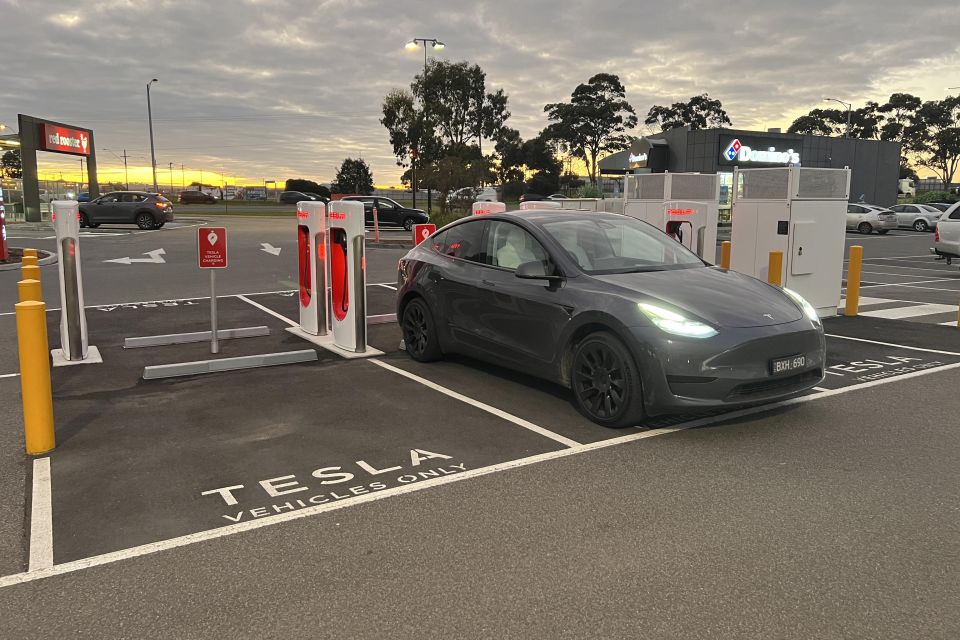
Tesla offers a four-year, 80,000km vehicle warranty. The battery and drive unit are warrantied for eight years or 160,000km for the rear-wheel drive Model Y, and eight years or 192,000km for the all-wheel drive Model Y.
This includes a 70 per cent battery retention over the eight-year warranty period.
Tesla doesn’t require its vehicles to be serviced each year like a traditional internal-combustion vehicle. Instead, it requires some items to be replaced at set intervals, these are:
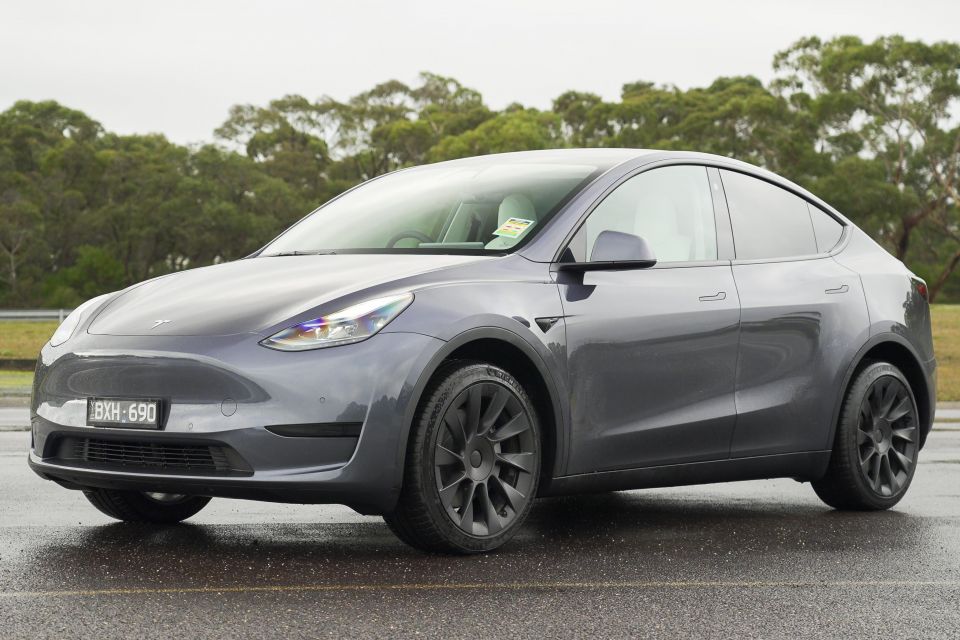
Buy your new car without the stress. It's fast, simple and completely free.

Great service from Travis and team, second time I have used this business would not hesitate to recommend them to anyone
Craig C.
Purchased a Ford Ranger in Sunshine Coast, QLD
CarExpert helped Craig save $7,224 on his Ford Ranger, now let us save you on your next new car.
Get your BEST priceWe ordered a Tesla Model Y because we loved our Model 3 Performance, but it was too small for a family and the ride was too firm to keep a kid in a baby seat asleep.
Hopefully the 19-inch Model Y wheel offers a significant improvement in ride quality over the optional 20-inch alloy wheel, because the 20-inch wheel doesn’t really make the ride any better than our Model 3 Performance.
Outside of the ride issue, the Model Y is an exceptional SUV. If you remove the fact it’s an EV from the equation, the asking price for the entry-level version is good value given the features, size, and performance.

Insert the fact it’s an electric vehicle and this makes it a relative bargain. An equivalent EV SUV from BMW in the iX3 will set you back $115,000 before on-road costs.
We look forward to getting behind the wheel of the base 19-inch wheel-shod version and subsequently the 21-inch Model Y Performance to see if there are any marked improvements on ride.
Either way, an adaptive damping setup is something Tesla should be looking at. It’d easily fix what is otherwise an excellent vehicle.
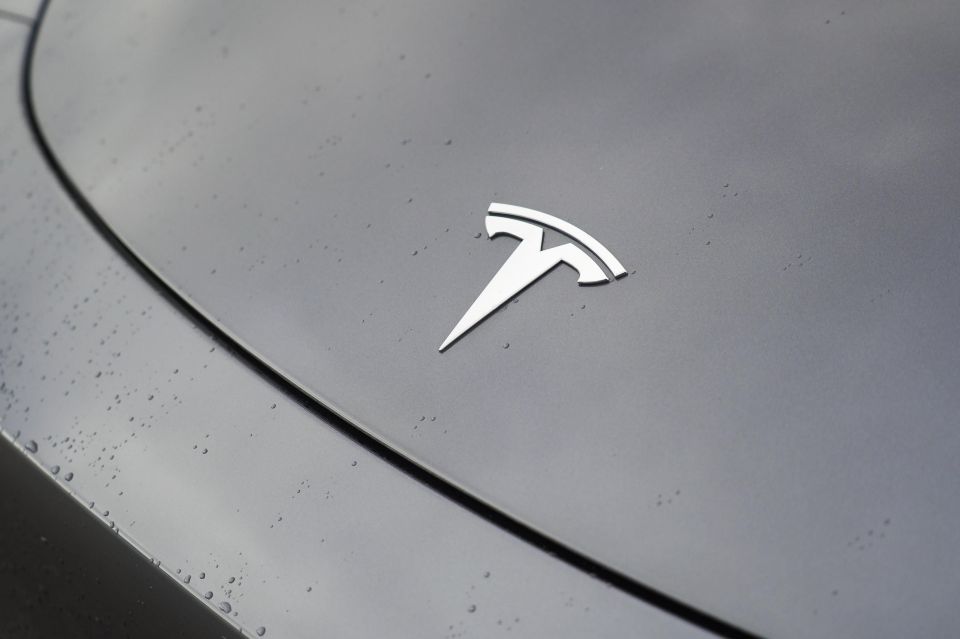
Click an image to view the full gallery.
Where expert car reviews meet expert car buying – CarExpert gives you trusted advice, personalised service and real savings on your next new car.
Paul Maric is a CarExpert co-founder and YouTube host, combining engineering expertise with two decades in automotive journalism.


Max Davies
1 Month Ago


Andrew Maclean
22 Days Ago


James Wong
18 Days Ago


Max Davies
17 Days Ago


Paul Maric
14 Days Ago


James Wong
11 Days Ago